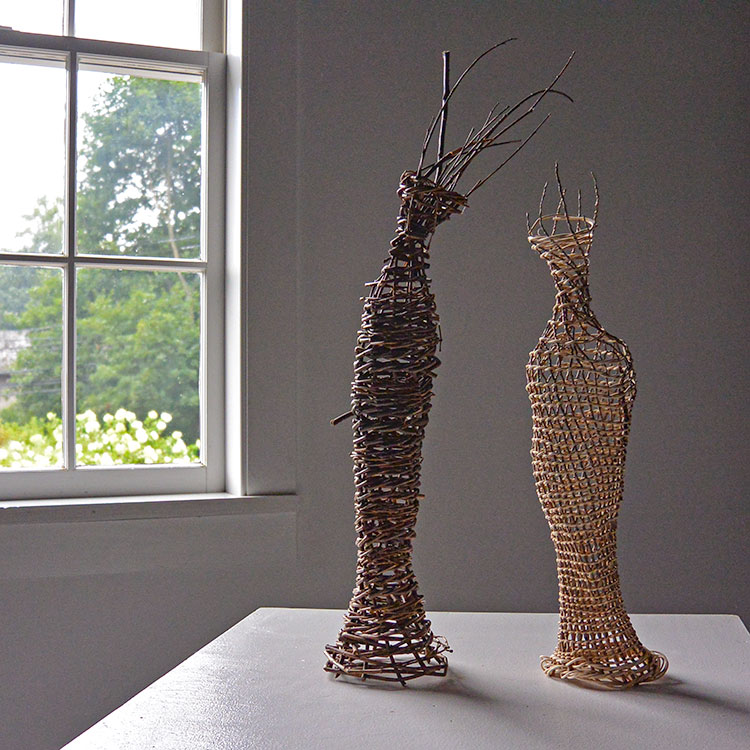
In our Spring 2019 exhibition Art + Identity: an international view, we asked artists to provide us work that reflected on identity. The 60+ artists took an expansive view, as you can imagine, but a few themes emerged. One of those was the influence of other cultures which these artists acquired by visiting and study. For Dawn MacNutt, the influence for her works, Praise North and Praise South, was classical Greek sculpture she saw first in a museum and then in Greece. “The sculpture and architecture of ancient Greece has been a major influence on my vision” says MacNutt. “I first encountered pre-classical Greek sculpture in the hallways of the Metropolitan Museum of Art in New York as a teenager in the 1950s. When I visited Greece 40 years later, the marble human forms resonated even more strongly. The posture and attitude of ancient Greek sculpture reflects forms as fresh and iconic as today… sometimes formal … sometimes relaxed.” Praise North and Praise South reflect the marble human forms, “columns, caryatids … sometimes truncated … ” found outdoors as well as in museums in Greece. They were inspired by two study and work trips to Greece that MacNutt made just before and after the millennium, 1995 and 2000.

Nnenna Okore grew up and studied in Nigeria. Common within her body of works is the use of ordinary materials, repetitive processes and varying textures that make references to everyday Nigerian practices and cultural objects. “… [M]uch like impermanent earthly attributes, my organic and twisted structures mimic the dazzling intricacies of fabric, trees, barks, topography and architecture,” says Okore. “All my processes are adapted or inspired by traditional women’s practice, the African environment, third-world economies and recycled waste.” Also, informing her aesthetics are familiar sounds of sweeping, chopping, talking and washing, processes that reflect the transience of human labor and its inevitable mark on the material world.
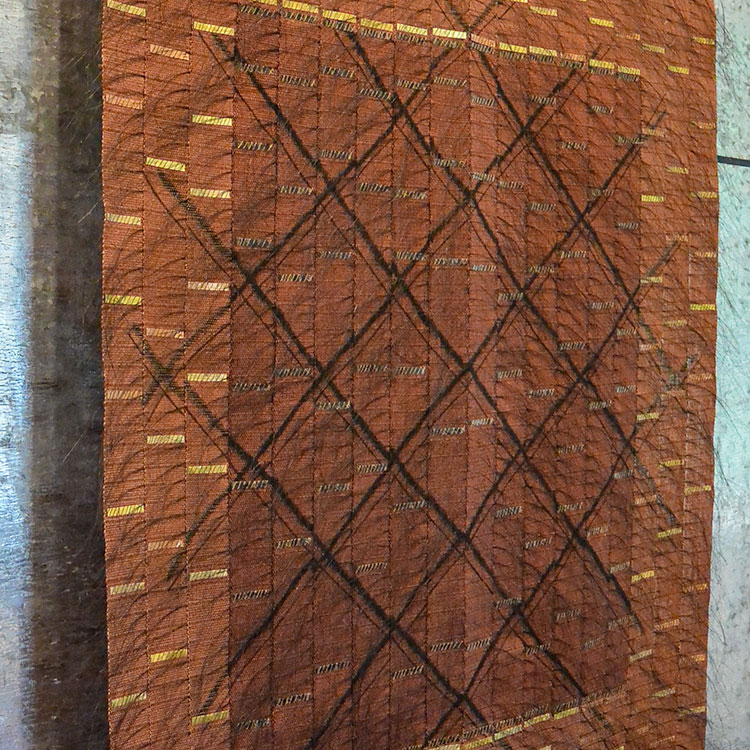
The weavers of South America are an influence for many artists. Research into the textiles of ancient Peru and Peruvian artists’ techniques informed Adela Akers‘ earlierwork. “Their inventive use of structure and pattern has inspired my work to this date.,” she says.
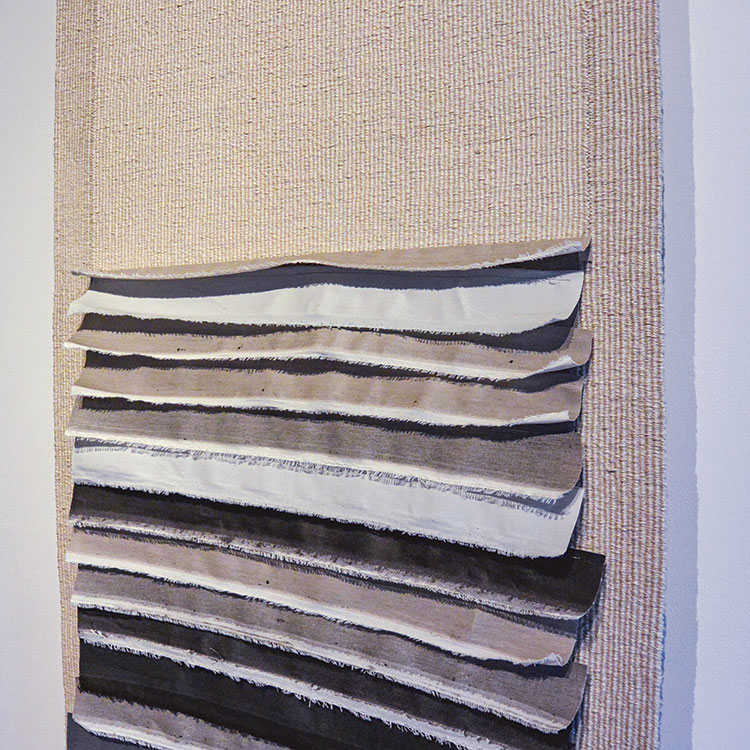
Carolina Yrarrázaval has always been fascinated by the strong people of the Andes “who live in harmony with nature, surrounded by a beauty that often turns into a harsh environment.” The remarkable community of the Precolumbian era were preservers of ancient traditions,” she says. An eclectic set of cultural influences attracted Katherine Westphal. She had what one writer called “magpie-like instincts,” buts he called herself a tourist, gathering experiences and images and memories — “then it all pops out in my work – someone else’s culture and mine, mixed in the eggbeater of my mind…,” she told her oral biographer.
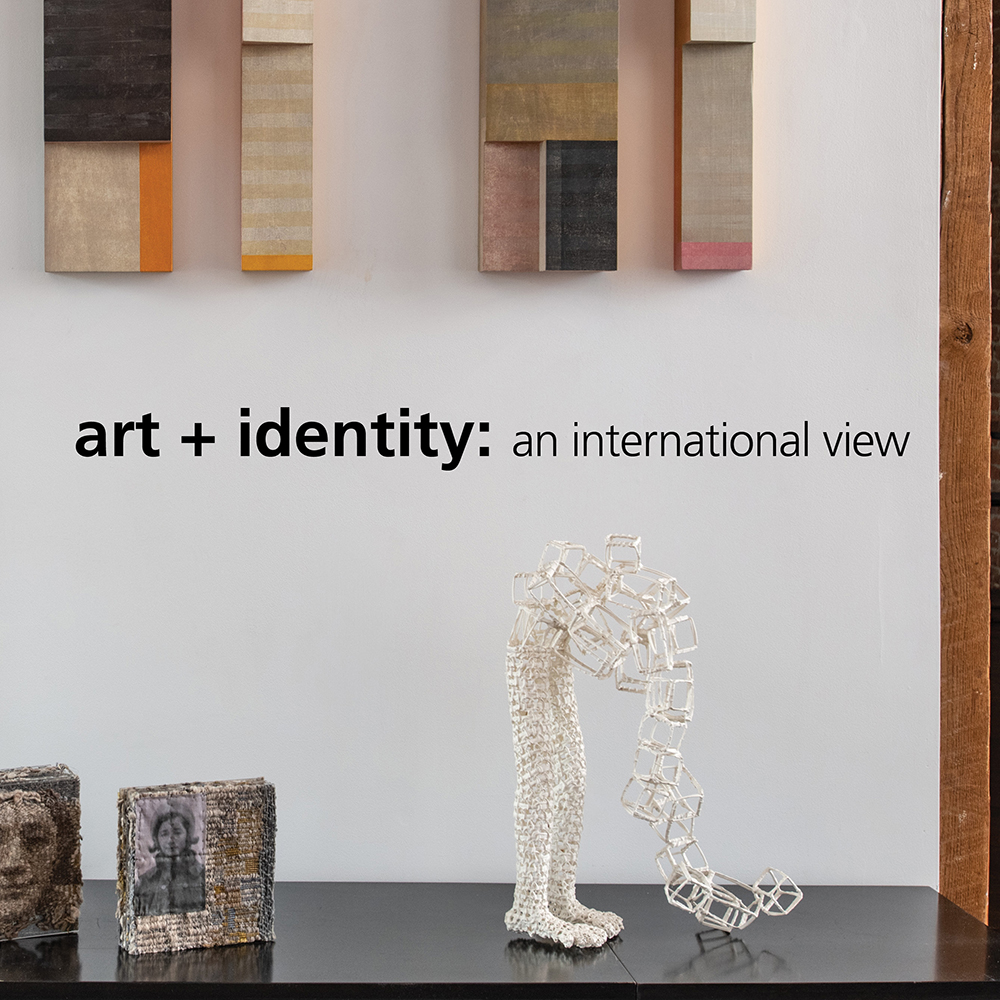
You can purchase a copy of the catalog Art + Identity: an international view at browngrotta.com.

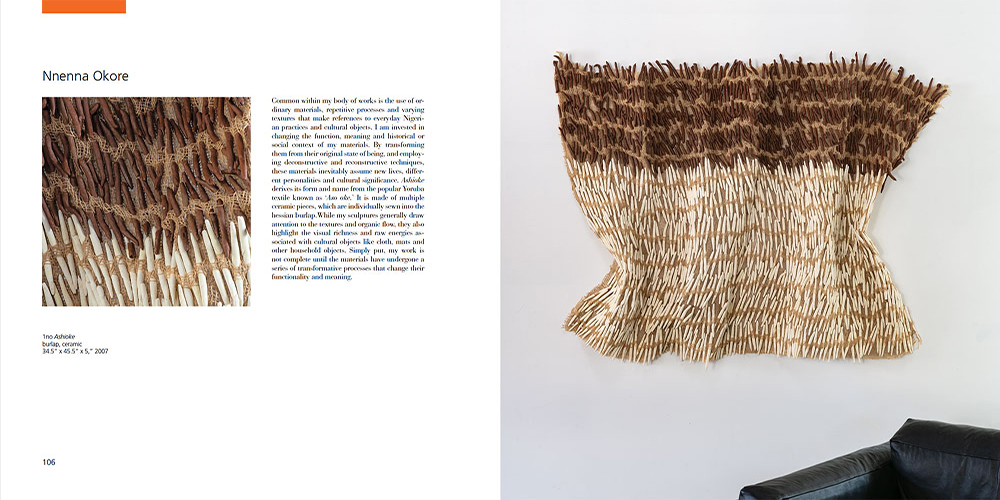

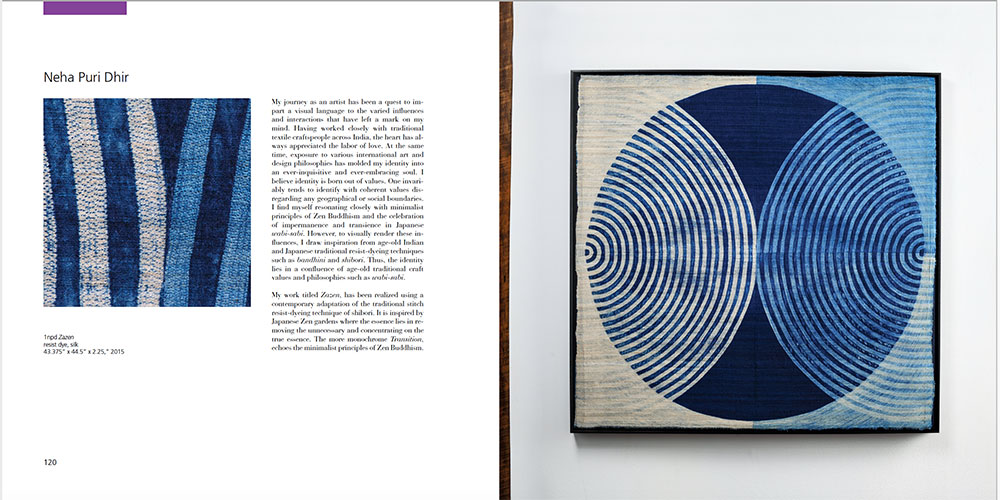
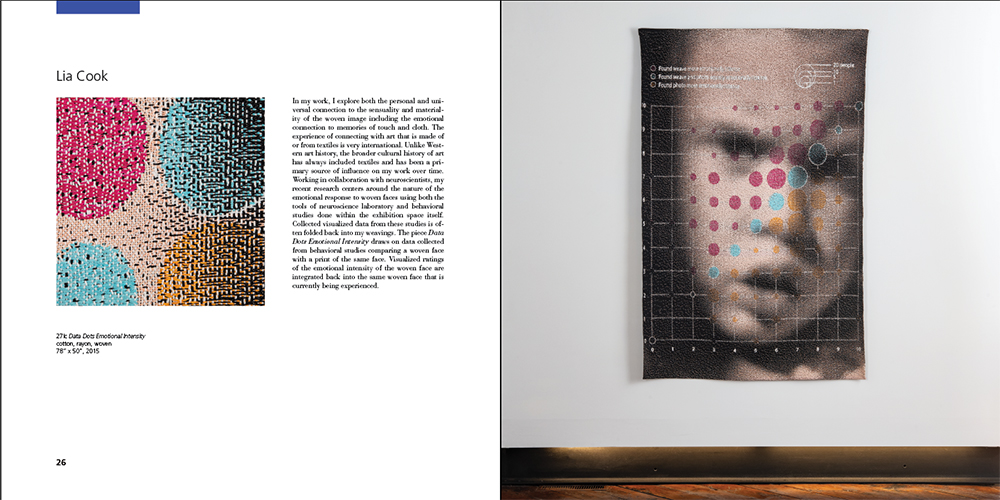

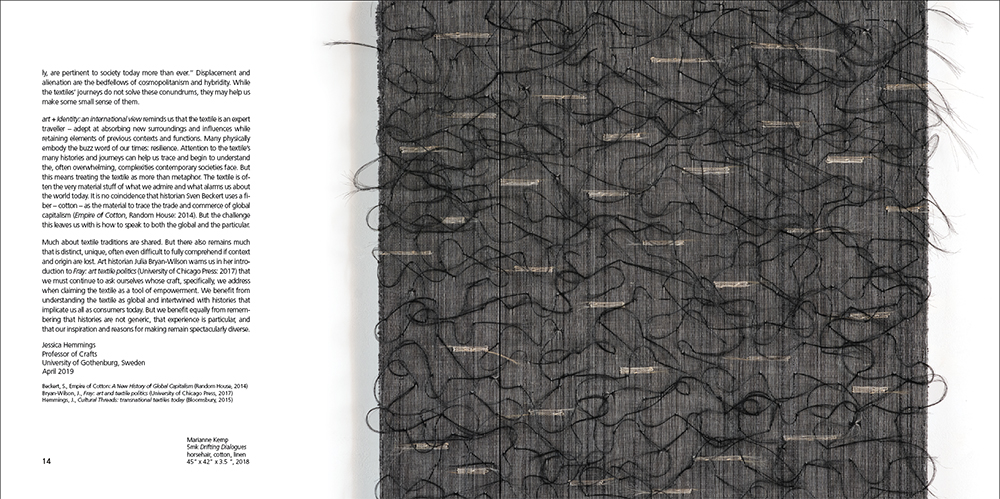

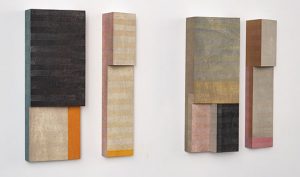


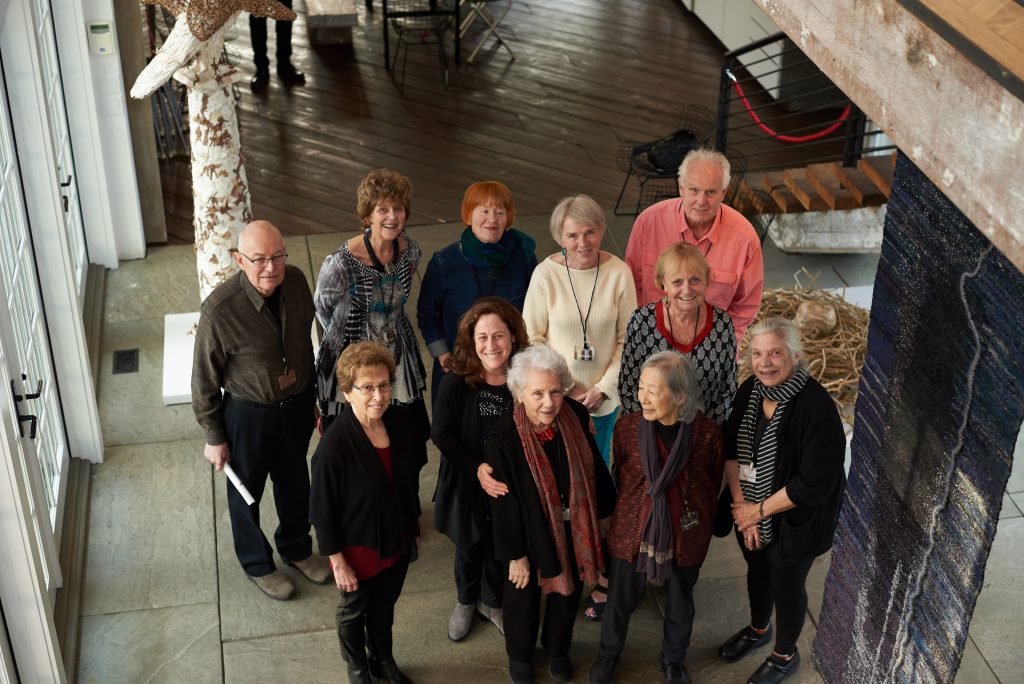

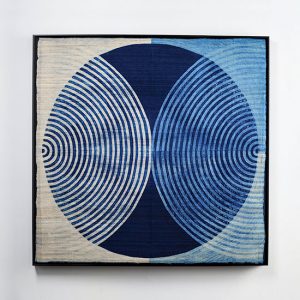
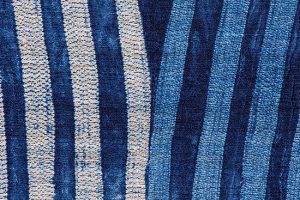


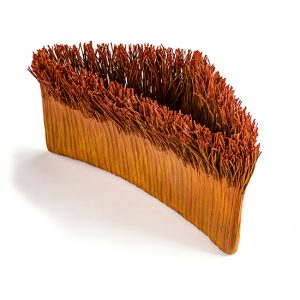
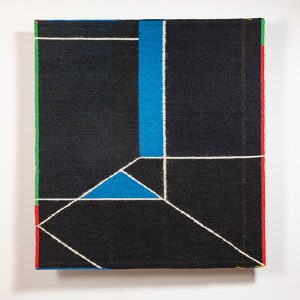
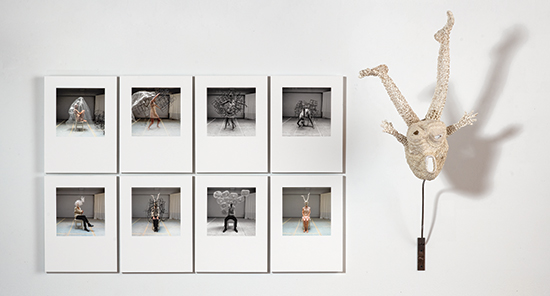
Art & Identity: A Sense of Place
In our 2019 Art in the Barn exhibition, we asked artists to address the theme of identity. In doing so, several of the participants in Art + Identity: an international view, wrote eloquently about places that have informed their work. For Mary Merkel-Hess, that place is the plains of Iowa, which viewers can feel when viewing her windblown, bladed shapes. A recent work made a vivid red orange was an homage to noted author, Willa Cather’s plains’ description, “the bush that burned with fire and was not consumed,” a view that Merkel-Hess says she has seen.
The late Micheline Beauchemin traveled extensively from her native Montreal. Europe, Asia, the Middle East, all influenced her work but depictions of the St. Lawrence River were a constant thread throughout her career. The river, “has always fascinated me,” she admitted, calling it, “a source of constant wonder” (Micheline Beauchemin, les éditions de passage, 2009). “Under a lemon yellow sky, this river, leaded at certain times, is inhabited in winter, with ice wings without shadows, fragile and stubborn, on which a thousand glittering lights change their colors in an apparent immobility.” To replicate these effects, she incorporated unexpected materials like glass, aluminum and acrylic blocks that glitter and reflect light and metallic threads to translate light of frost and ice.
Mérida, Venezuela, the place they live, and can always come back to, has been a primary influence on Eduardo Portillo’s and Maria Davila’s way of thinking, life and work. Its geography and people have given them a strong sense of place. Mérida is deep in the Andes Mountains, and the artists have been exploring this countryside for years. Centuries-old switchback trails or “chains” that historically helped to divide farms and provide a mountain path for farm animals have recently provided inspiration and the theme for a body of work, entitled Within the Mountains. Nebula, the first work from this group of textiles, is owned by the Cooper Hewitt Museum.
Birgit Birkkjaer’s Ode for the Ocean is composed of many small woven boxes with items from the sea — stones, shells, fossils and so on — on their lids. ” It started as a diary-project when we moved to the sea some years ago,” she explains. “We moved from an area with woods, and as I have always used materials from the place where I live and where I travel, it was obvious I needed now to draw sea-related elements into my art work.”
“I am born and raised in the Northeast,” says Polly Barton, “trained to weave in Japan, and have lived most of my life in the American Southwest. These disparate places find connection in the woven fabric that is my art, the internal reflections of landscape.” In works like Continuum i, ii, iii, Barton uses woven ikat as her “paintbrush,” to study native Southwestern sandstone. Nature’s shifting elements etched into the stone’s layered fascia reveal the bands of time. “Likewise, in threads dyed and woven, my essence is set in stone.”
For Paul Furneaux, geographic influences are varied, including time spent in Mexico, at Norwegian fjords and then, Japan, where he studied Japanese woodblock, Mokuhanga “After a workshop in Tokyo,” he writes, “I found myself in a beautful hidden-away park that I had found when I first studied there, soft cherry blossom interspersed with brutal modern architecture. When I returned to Scotland, I had forms made for me in tulip wood that I sealed and painted white. I spaced them on the wall, trying to recapture the moment. The forms say something about the architecture of those buildings but also imbue the soft sensual beauty of the trees, the park, the blossom, the soft evening light touching the sides of the harsh glass and concrete blocks.”